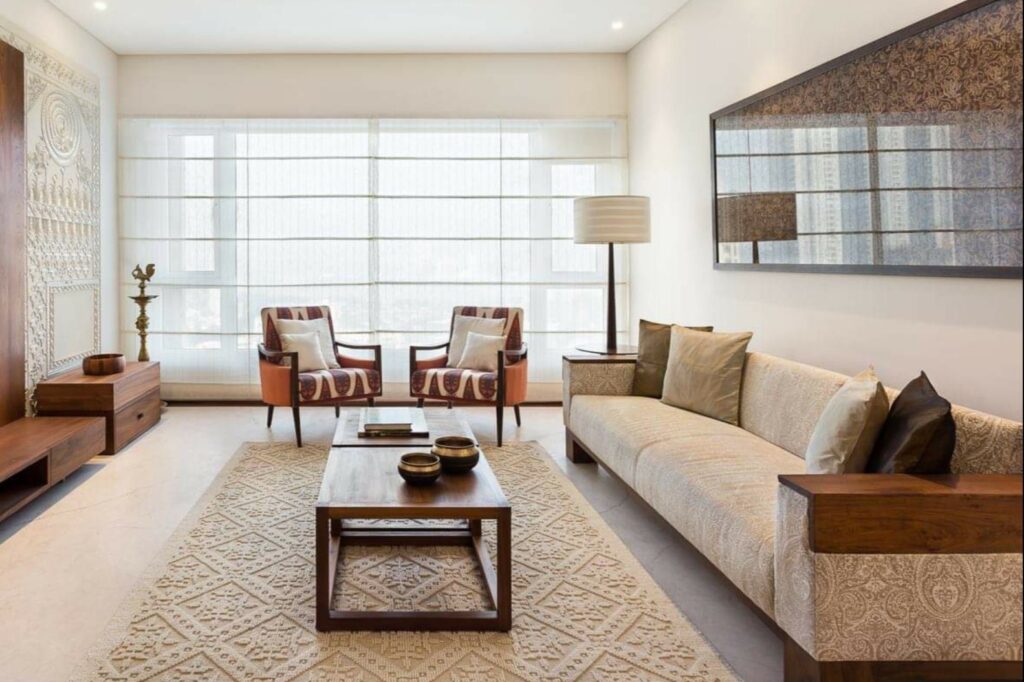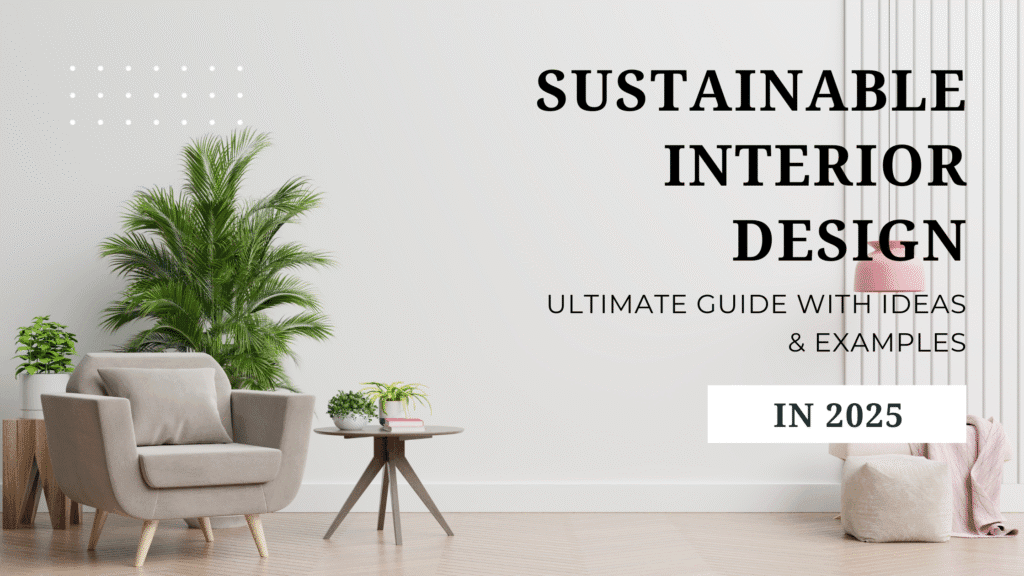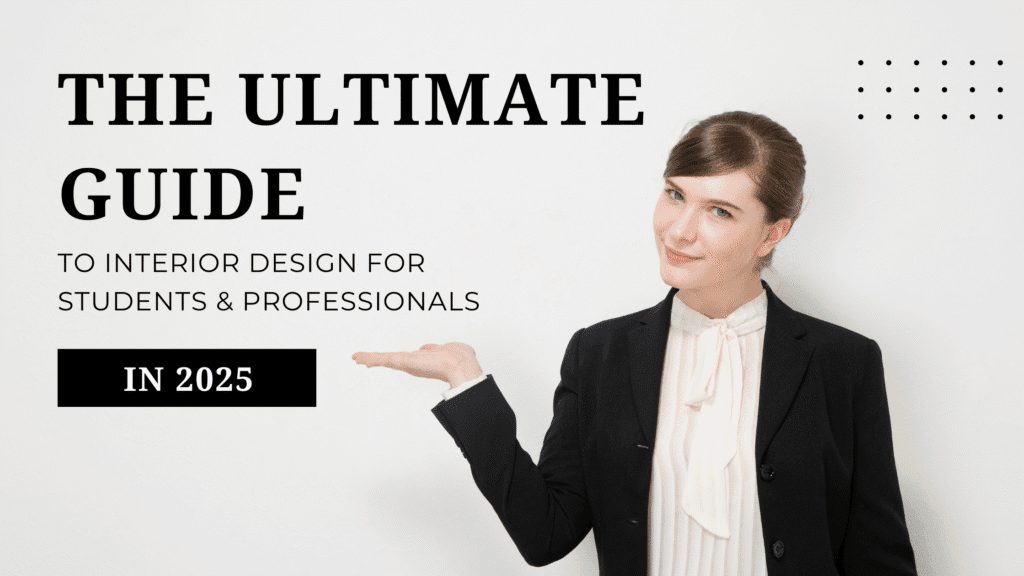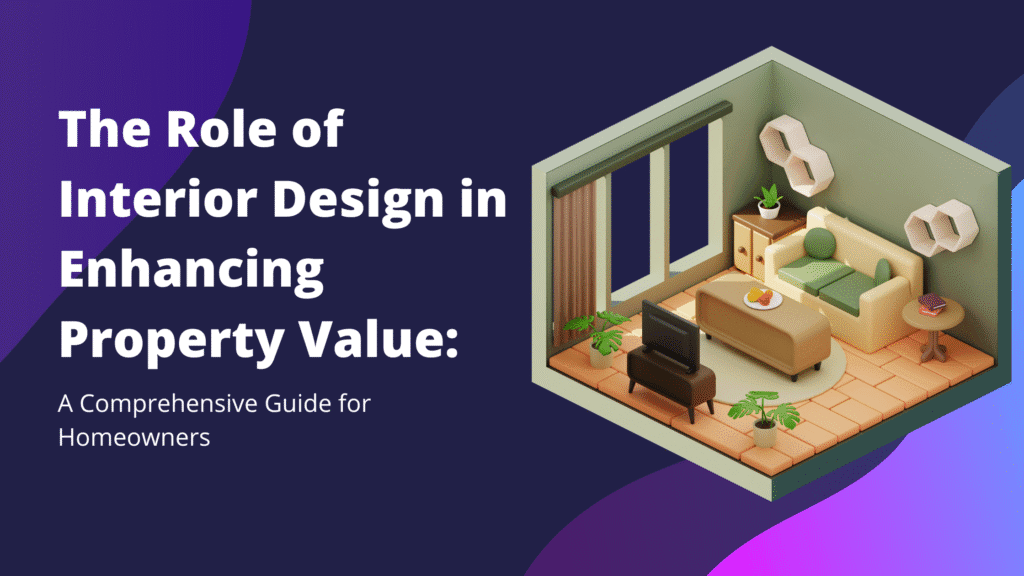Why Sustainable Interior Design Matters Today
When you hear the word sustainability, what comes to mind? Probably recycling bins, solar panels, or organic fabrics. But did you know that interior design plays a much bigger role in shaping a sustainable lifestyle? From the way our homes consume energy to the materials used in office furniture, every design choice has a long-term impact on our environment, health, and even finances.
As one of the leading interior design firm in Pune, we at North Interior Spaces see a major shift: families, businesses, and even students of design are asking—“How can interiors be both beautiful and sustainable?”
This article answers that in depth. Whether you’re a homeowner planning your dream apartment, a professional exploring green design services, or a student mapping your interior design pathway, you’ll find everything you need to know about sustainable interiors here.
What Exactly is Sustainable Interior Design?
Simply put, sustainable interior design is about creating spaces that:
- Use fewer natural resources,
- Improve the health and well-being of occupants, and
- Remain cost-effective in the long run.
It goes beyond eco-friendly furniture or bamboo flooring. Think of it as designing a home or office that consumes less, wastes less, and gives more back to nature.
Example: A 2BHK in Pune designed with larger windows and reflective wall paints can reduce electricity bills by 25–30% just by maximizing natural light. That’s sustainability in action.

Benefits of Sustainable Interiors
1. Environmental Benefits
- Lower carbon footprint by using renewable materials.
- Better indoor air quality through non-toxic paints and finishes.
- Less landfill waste with modular, reusable furniture.
2. Health & Well-being
- Biophilic design elements (plants, natural textures, sunlight) improve mood.
- Neuroaesthetics research shows certain color palettes reduce stress.
- Cleaner air through smart ventilation and low-VOC materials.
3. Financial Benefits
- Energy-efficient lighting, appliances, and layout reduce monthly bills.
- Durable sustainable materials (engineered wood, terrazzo, recycled stone) last longer.
- Increases property value — eco-friendly homes attract buyers.
Key Elements of Sustainable Interior Design
1. Eco-Friendly Materials
- FSC-certified wood, recycled metals, natural stone.
- Low-VOC paints and adhesives.
- Natural fabrics like cotton, hemp, jute.
2. Energy Efficiency
- LED and smart lighting systems.
- Motion sensors to reduce electricity wastage.
- Passive cooling and ventilation design.
3. Water Management
- Greywater recycling for gardening.
- Rainwater harvesting integration.
- Low-flow taps and dual-flush toilets.
4. Waste Reduction
- Modular kitchens and wardrobes that can be reused.
- Upcycled furniture from reclaimed wood.
- Furniture rental/resale economy.
5. Biophilic Design
- Indoor plants that purify air.
- Natural textures like stone, terracotta, bamboo.
- Sunlight-maximized layouts.
Future Trends: Where Sustainable Design is Heading
1. Circular Economy in Interiors
Instead of “use and throw,” furniture and materials will be designed for disassembly and reuse.
2. AI + Sustainability
AI-powered tools will optimize room layouts for airflow, sunlight, and energy efficiency. With the rise of digital innovation, homeowners and businesses can explore how technology and smart design go hand in hand to create eco-friendly living spaces.
3. Indoor Farming in Homes
Kitchen gardens, vertical farming walls, and edible interiors are gaining momentum.
4. Green Certifications Becoming Standard
In India, certifications like GRIHA and IGBC Green Homes are expected to become mandatory for high-end projects.
How to Implement Sustainability at Different Scales
For Homeowners in Pune & PCMC
- Small steps: Switch to natural fabrics, add indoor plants, replace bulbs with LEDs.
- Medium steps: Choose modular furniture that can be reused if you shift homes.
- Large steps: Integrate solar energy, rainwater harvesting, and energy-efficient appliances.
For Offices & Commercial Spaces
- Acoustic panels made from recycled PET bottles.
- Flexible seating layouts to reduce material usage.
- Smart energy dashboards to monitor consumption.
For Students & Future Designers
- Learn tools like SketchUp with sustainability plugins.
- Explore materials library with eco-certified brands.
- Focus your career pathway on sustainable residential interior design firms.
Challenges & Misconceptions
- “It’s too expensive” → Initial costs may be higher, but ROI is visible in 2–3 years through reduced bills.
- “It only means eco-friendly furniture” → No, it’s about systems: energy, water, waste, and health.
- “Hard to maintain” → Sustainable designs often require less maintenance because they’re durable.
Frequently Asked Questions
Q1. What is the cost difference between traditional and sustainable interiors?
→ Around 10–15% higher initially, but you save in long-term maintenance and energy bills.
Q2. How can I make my apartment in Pune sustainable on a budget?
→ Start small: LEDs, indoor plants, natural fabrics, modular furniture.
Q3. Are sustainable materials durable in Indian weather?
→ Yes. Engineered wood, terracotta, and recycled stone are highly durable for Indian climates.
Q4. Which certifications matter in sustainable design?
→ LEED, GRIHA, WELL, and IGBC certifications are globally recognized.
Conclusion: The Future is Green
Sustainable interior design is no longer a luxury — it’s becoming the industry standard. Whether you are a homeowner in Pune planning a new apartment, a business looking to create a healthier workplace, or a student exploring your interior design pathway, the future lies in spaces that are beautiful, functional, and eco-friendly.
At North Interior Spaces, we’ve successfully blended modern interior design services with sustainability principles — from residential projects in Baner to commercial offices in PCMC.


